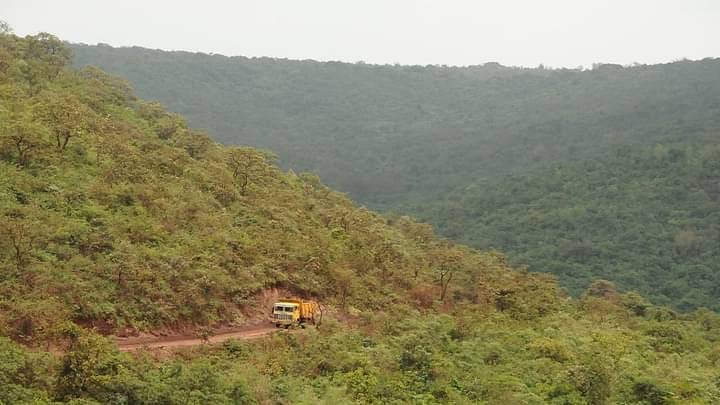
About 800 acres of the land have already been mined for iron ore. Forest officials refused to allow mining in 2019 due to concerns about the environment, animals, and forest degradation.
According to Deccan Herald, if the union environment ministry accepts a new mining project, some 29,400 trees that are distributed across 150 acres of forests in the already mine-ravaged areas near Sandur in Karnataka’s Ballari district could fall.
According to the report by DH, local activists became concerned when they noticed Karnataka’s forest department workers starting to count individual trees last month on 150 acres of forested area north of Sandur in Ballari district, notably the Ramanadurga forest range.
The Steel Authority of India Limited (SAIL) and Visvesvaraya Iron and Steel Plant Limited (VISL) have proposed to mine in this area, and the State Forest Department has identified this project as a “essential undertaking for the survival of the VISL,” according to DH’s June 6 report. A subsidiary of SAIL, the VISL manufactures steel and pig iron and is based in the Karnataka town of Bhadravati in the Shivamogga area.
The Hindu reports that once the Kudremukh mining was outlawed by the Supreme Court in the middle of the 2000s, the plant started to lose finances. The VISL was later taken over by SAIL.
The majority of the trees marked for logging as part of the latest exercise are native tree species, in accordance to the DH report. DH was informed by local activists, who have been monitoring the deforestation caused by mining in the area for 20 years, that the establishment of a legal mine in this area would have a significant negative impact on the ecology and wildlife, particularly the Asiatic sloth bears who dwell in that region.
Local activists told DH that while funding to repair Sandur’s woods is gradually flowing in to make up for the forest loss brought on by mining, it does not make sense to lose any more standing forests for this reason.
The DH report stated that the Karnataka Mining Environment Restoration Corporation recently approved four eco-restoration projects totaling Rs 135.71 crore, including planting almost 2 lakh saplings in south and north Sandur.
The idea to reroute forestland in Sandur for mines was put on hold in 2014, but it was brought back in 2019 after receiving approval from the Bureau of Mines, according to a DH news article from 2019. The report further stated that the National Mineral Development Corporation’s (NMDC) proposal sought to mine about 600 lakh tons of iron ore over 393 acres in Sandur. The mines were expected to produce a profit of at least Rs 9,000 crore over the following 20 years, according to the proposal. This occurred during a period when the region was already mining about 800 acres of land.
Back then, reports from state forest officials had stated that mining should not be allowed in the area since it would not only harm forests but also create soil erosion. This might also have an impact on a significant archaeological site: the proposed mining site is located only a few hundred meters from Kumaraswamy Temple, an eighteenth-century building.
The state forest department has suggested that the union environment ministry approve the project, though, according to the most recent DH report.
This is the second such report about significant tree cutting that has appeared in the media recently. Three districts in Uttar Pradesh would see the felling of a comparable amount of trees, about 33,000, to create room for a two-lane pilgrimage route.
